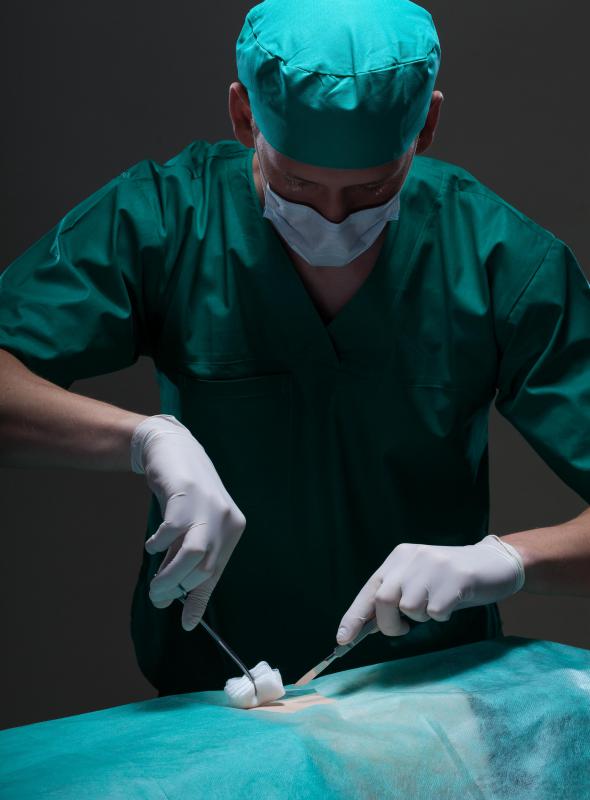At TheHealthBoard, we're committed to delivering accurate, trustworthy information. Our expert-authored content is rigorously fact-checked and sourced from credible authorities. Discover how we uphold the highest standards in providing you with reliable knowledge.
What is Treacher Collins Syndrome?
Treacher Collins syndrome is an inheritable disorder that causes a baby to be born with distorted facial features. The condition affects bone and soft tissue development in the skull and face, and can lead to abnormally-shaped ears, cheeks, eyelids, and jaws. In severe cases, Treacher Collins syndrome can impair hearing and cause airway constriction. Most people with the disorder need to undergo reconstructive surgical procedures throughout their lives to improve their appearances and prevent medical problems.
Known in medical circles as mandibulofacial dysostosis, Treacher Collins syndrome was first described in 1900 by the physician after whom it is named. The disorder results from a mutation of a specific gene that controls the development of facial bones and cartilage tissue in an embryo. Treacher Collins syndrome is considered an autosomal dominant disorder, meaning that a child will inherit it if one of his or her parents carries the mutated gene. About half of the reported cases are the result of new mutations, rather than familial inheritance.

An infant who is born with Treacher Collins syndrome is likely to have abnormally shaped ears, and part or all of the cartilage that makes up the outer ear may be missing. The cheekbones may be lower than normal, giving the eyes a drooping appearance. Most babies have very small mouths and lower jaws as well. Facial deformities can result in a number of medical issues, including hearing loss, vision problems, and difficulties speaking, eating, and breathing.

An obstetrician is usually able to diagnose Treacher Collins syndrome before an infant is born through routine ultrasound imaging. If deformities are not prominent, the disorder may not be diagnosed until an examination after birth. When a doctor notices signs of Treacher Collins syndrome, he or she will typically take a computerized tomography scan of the newborn's head to study the malformations. If an infant is born with airway constriction, doctors can administer emergency surgical treatment to insert breathing and feeding tubes. In addition, a baby who cannot hear well is usually fitted with hearing aids right away.

Doctors typically decide to wait until a patient is older before considering further treatment. Around the age of five, enough cartilage tissue has developed around the ribs to allow a surgeon to graft pieces of it onto the deformed ears. Bones can also be grafted to reform the jaws and cheeks, though surgeons do not typically attempt such a procedure until the patient is in his or her twenties. An individual may need to receive multiple bone grafts and plastic surgery over the course of his or her life to fully correct facial features.
AS FEATURED ON:
AS FEATURED ON:













Discuss this Article
Post your comments